Bianchi, 1909, tipo C 20-30 HP
Bianchi "tipo C 20-30 HP", 1909
Born in Milan in 1865, Edoardo Bianchi founded the company that bore his name in 1885, when he was just 20.
From the early production of wheelchairs, precision instruments, and especially bicycles (he was the first Italian who adopted “pneumatic tyres”), at the end of 19th century, he introduced the production of De Dion-powered cars. In the following years, the company started to produce motorcycles and trucks as well.
In 1955, the company became part of a joint venture with FIAT and Pirelli, giving birth to the brand Autobianchi.
On the car shows something new for the time: for the first time on this model, they adopted an electrical system for interior lighting, powered by a battery made up of glass pots full of distilled water and sulphuric acid.
Other peculiarities are the original carbide headlamps, hand crank, the driver’s compartment separated from the passengers’ rear compartment, and, in addition, the upper part can be removed so that the car becomes a torpedo.
Luciano Nicolis used to say: "This is a Bianchi I bought many years ago when vintage cars still were not a thing. They told me Counts Lada of Cremona owned it, it was parked under a porch and everyone thought it was an old carriage, but it was actually a luxury car. During WWI all cars were confiscated, my guess is that they detached the engine and the front and left it on that granary. The cabin was hidden behind other carriages so nobody could notice it. They said it didn't work, they even broke the gearbox which was detached from the engine and hit it with a hammer to demonstrate it didn't work. Maybe when the war was over they took it back outside but it was outdated and they abandoned it like old junk. Cars had become modern and even had electric starters. This Bianchi, had a luxury body and in summer you could take the top off and use a soft one, doors were similar to trains' ones with curtains and cut crystal. In the rear there was also a little trumpet to speak to the driver who followed the passengers' orders”
“In 1909 this car already had a battery for interior lighting, something new for the time. Accumulatori Torino built them. The carbide had a bad smell and was not suitable for interior use, while this electric one, with this glass pots, could do. Even this is an expression of great technology and modernity.
The engine intake is located on the exhaust pipe, it sucked hot air from it, similarly to what we make today.
(Note: Turbocharged engine has a turbine that forces dry air from the exhaust to the intake to increase power)
These are all pipe lubricants, while the oil pump is on the front and sent oil drops to the required spots.
Near the steering column there is a hand pump to pump petrol before starting the car. When the engine is running this pump gathers steam (that builds up because of a bottleneck on the exhaust pipe) through a pulsometer; by doing so it creates pressure in the tank that helps petrol to get to the engine; inside the pulsometer there is a brass net to avoid backfire that could ignite the petrol inside the tank”
Museo Nicolis has a rich display of Bianchi vehicles: bicycles, motorcycles and cars.
CARBIDE HEADLAMPS (still the original ones).
Interior HANDLES made of bone.
Crystal cut GLASS that rolls down like carriages' ones.
Rolled CURTAINS, typical of the time.
LEATHER interior.
TRUMPET to talk to the driver.
Rear VIS-A-VIS seats (like carriages).
Many NICKEL-PLATED parts. Nickel plating was applied on parts that tends to wear most. In Europe was not commonly used. The parts were probably nickel-plated in the US. This trip stood alot of time back then, about 6 months. To finish a car as this one money and time was required.
BATTERY with DOUBLE ACCUMULATOR of carbide gas, one of which is the reserve (on the right side near the driver).
HEATING: FOOT WARMER filled with boiling water and placed in the rear compartment, when the water cooled down they put it in the radiator.
On the steering there are two levers: one for the TIMING ADJUSTMENT and the other is the HAND ACCELERATOR.
On the dashboard we can find an OIL PUMP with a crank, from which many pipes come out and goes to the engine to lubricate different spots. Before starting the car you had to hand crank it, then when the engine fired up it worked autonomously
On the roof of the Bianchi there's a rack with the SPARE TIRE, still without the rim.
1994 Concorso “Firenze Automobili d’Antiquariato”, 1° Place Veteran class
1995 The car participates at the “Torino-Asti-Torino” Centenary
1995 The car participates at the “Salita delle Torricelle” in Verona

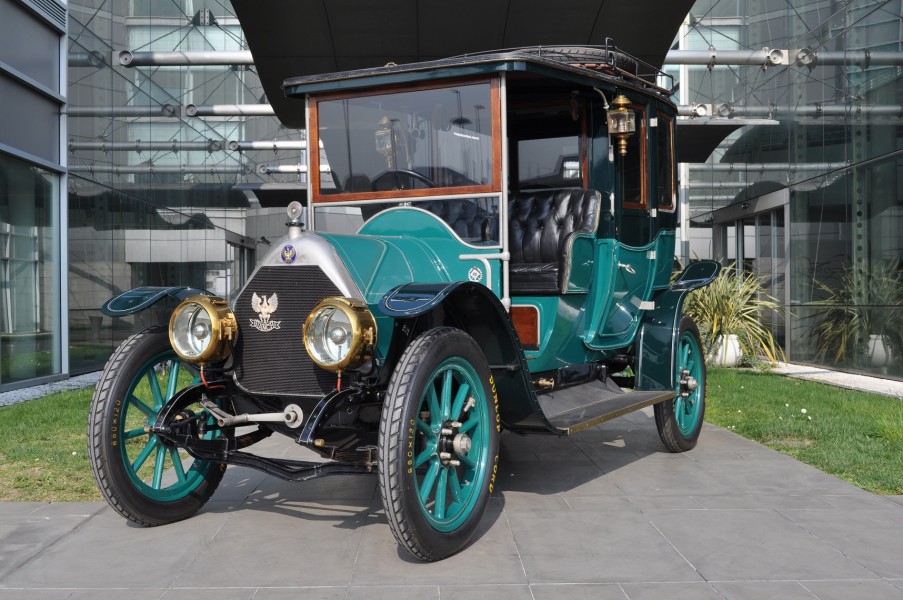
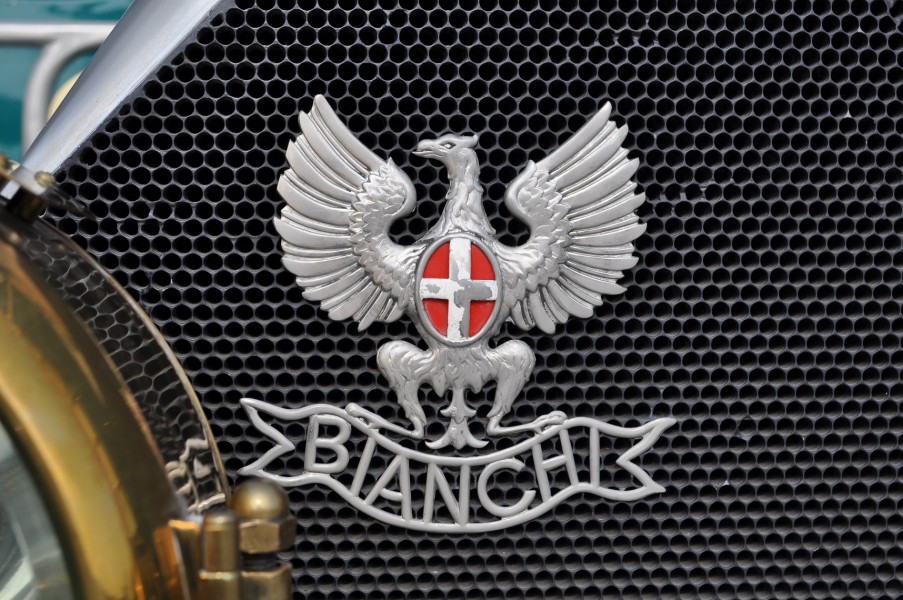
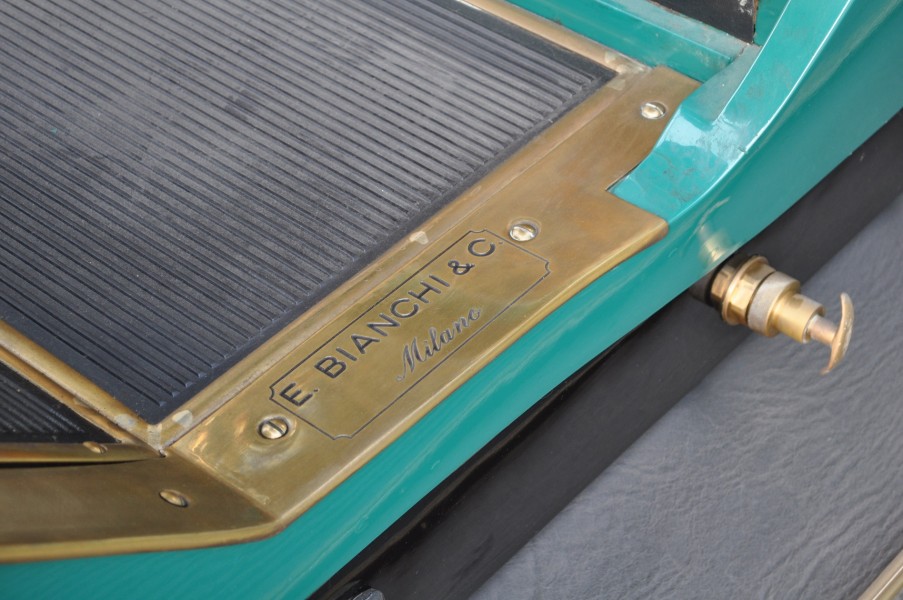
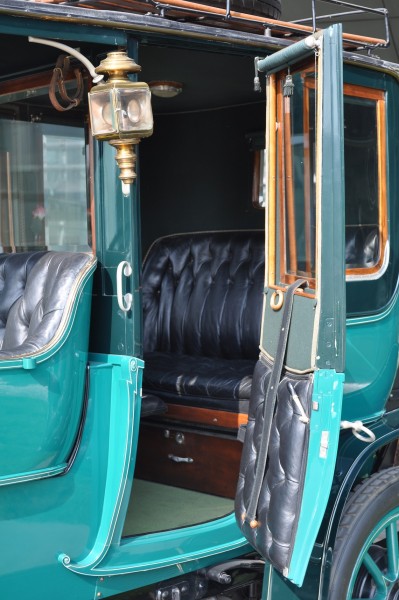
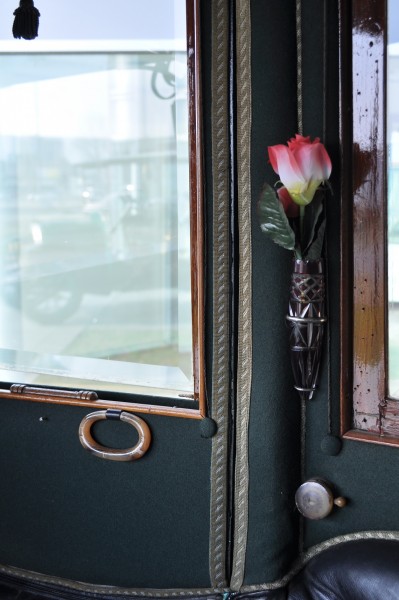
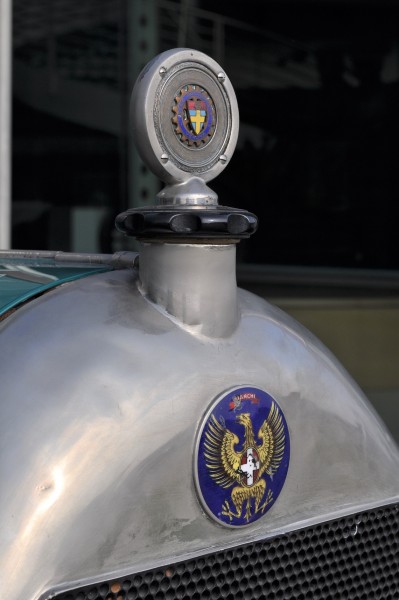
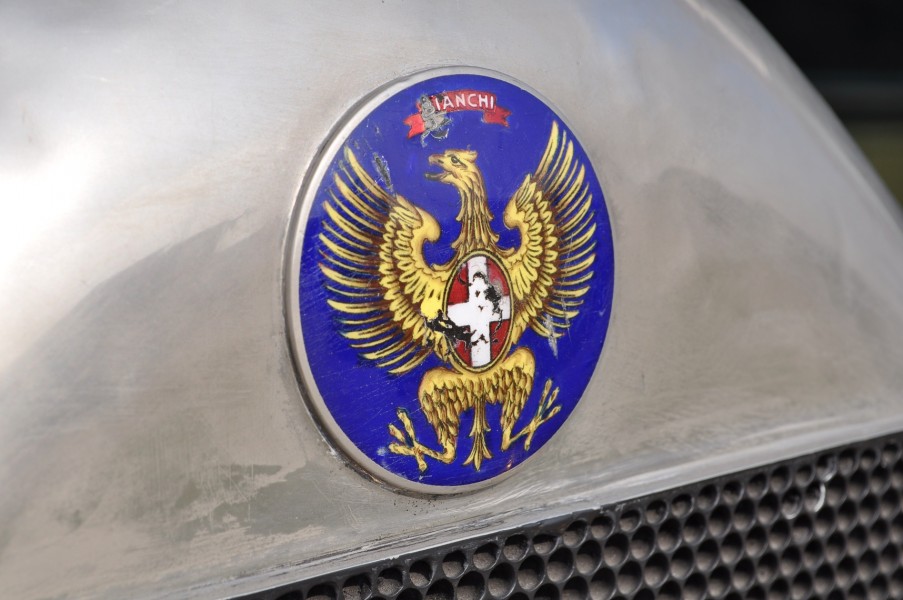
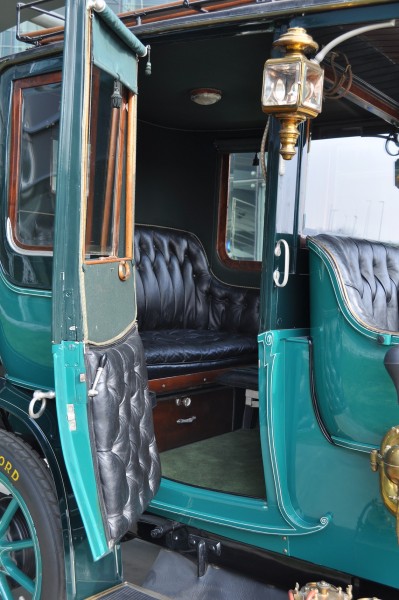
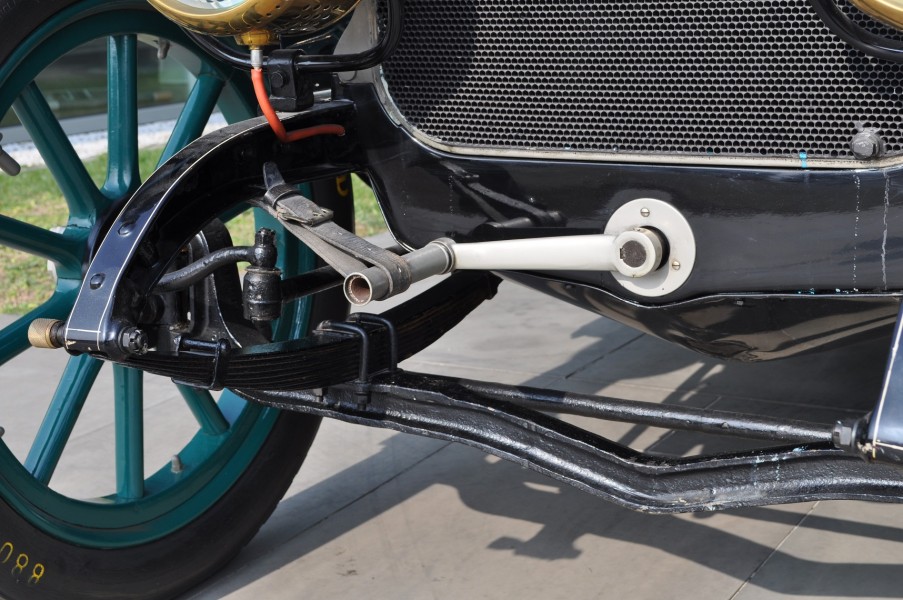
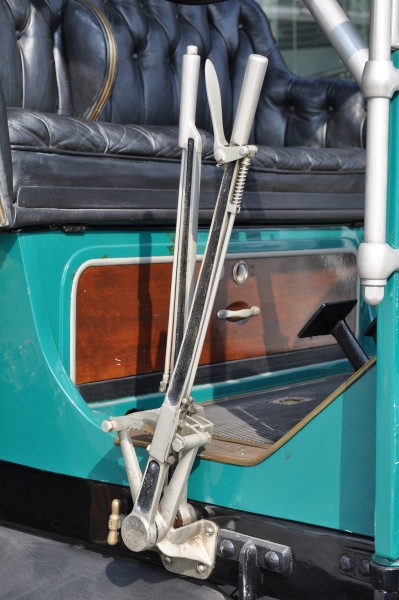
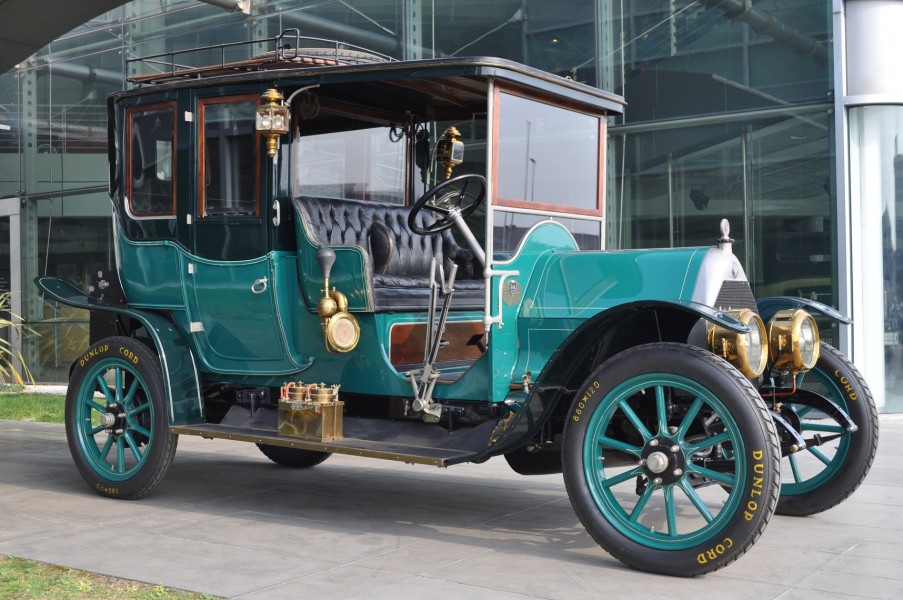
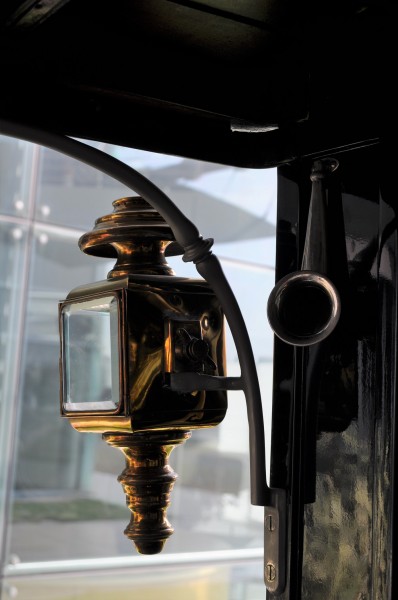
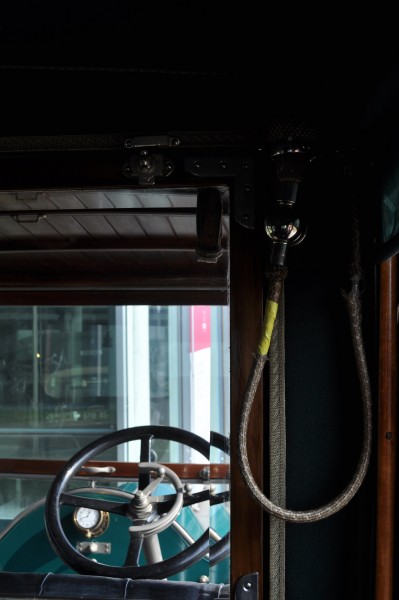
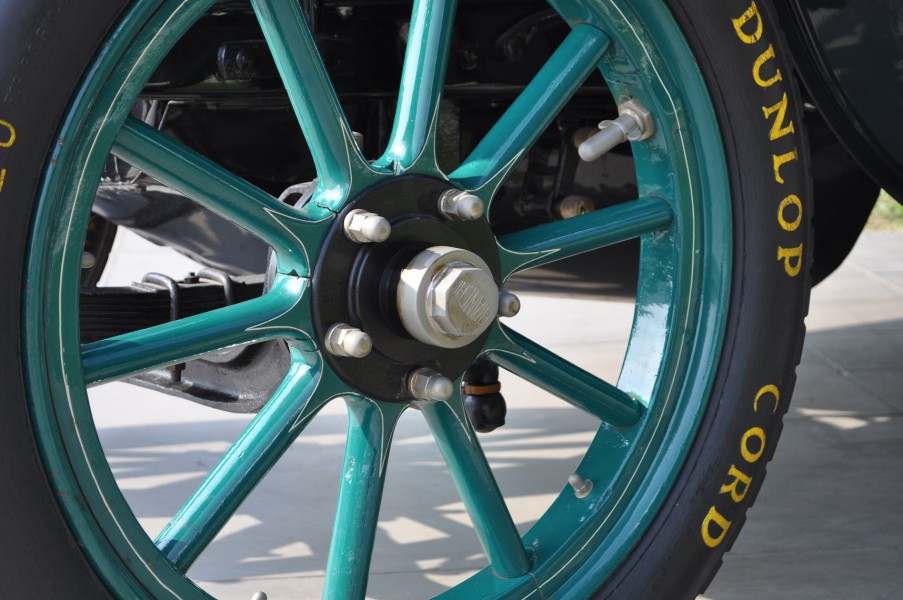
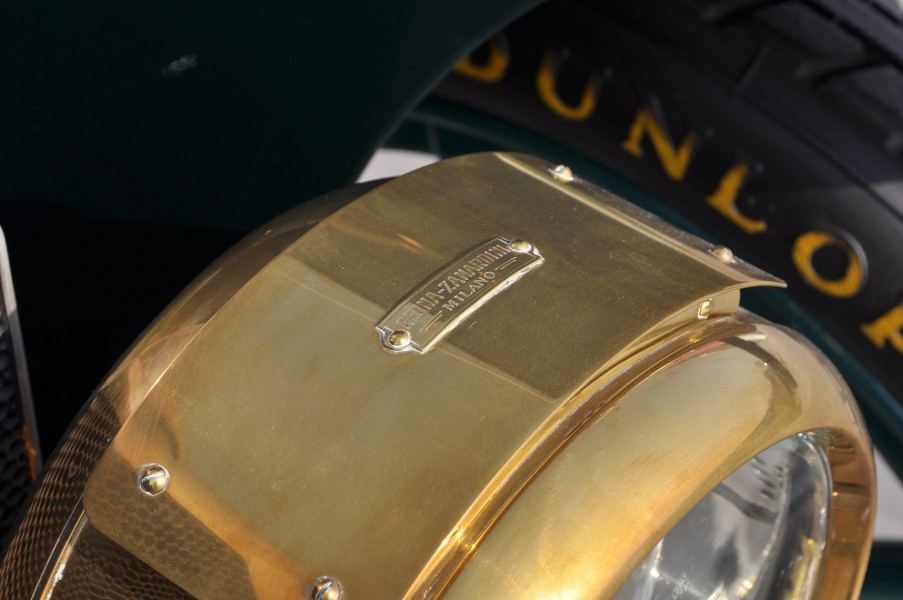
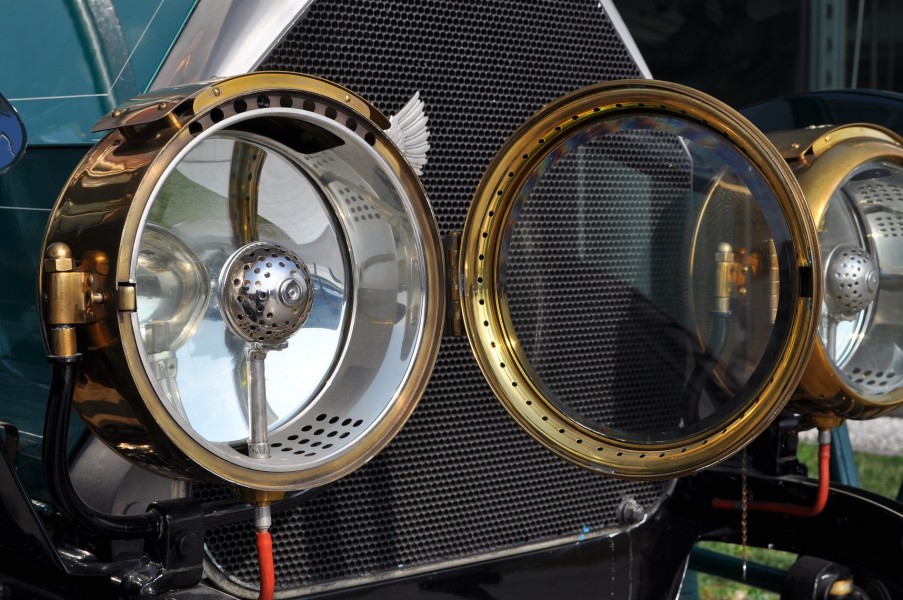
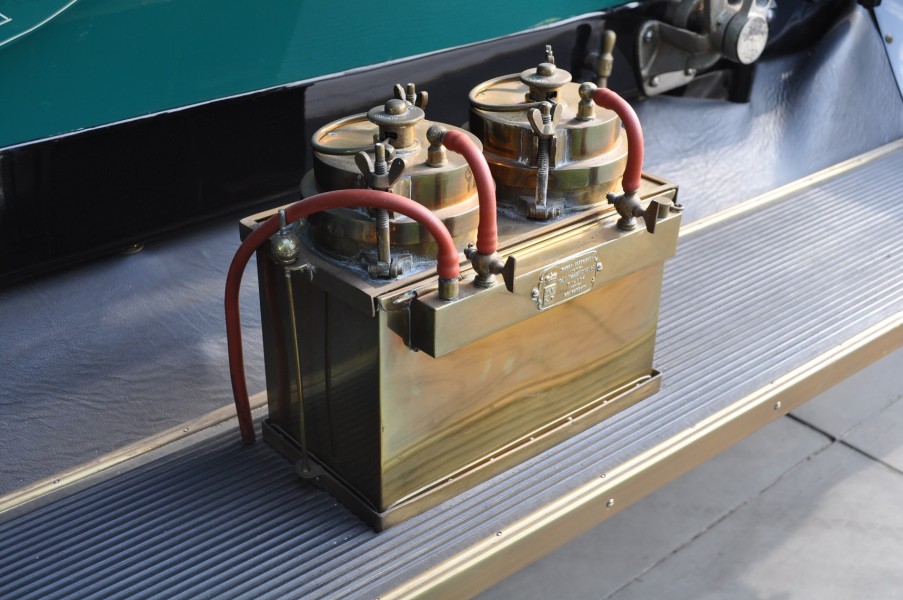
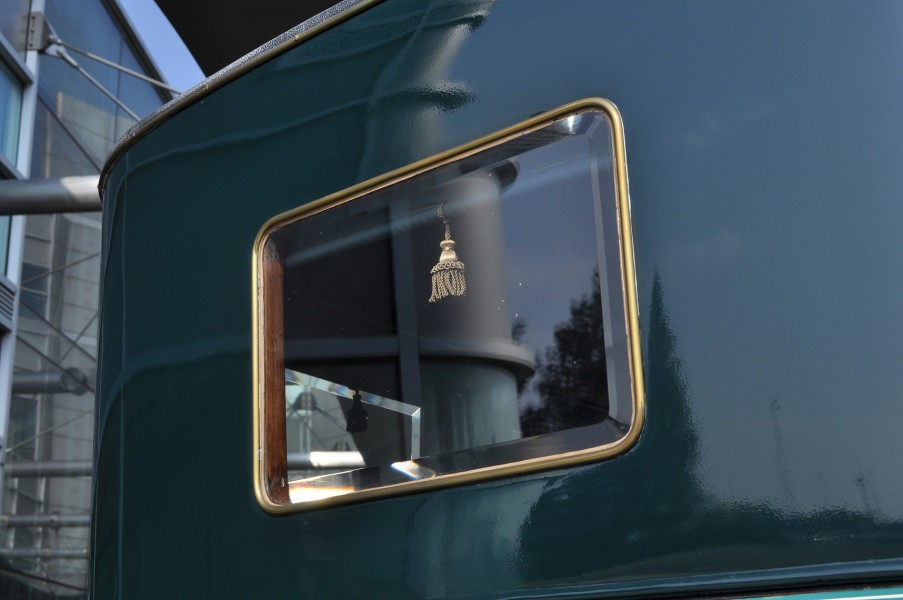
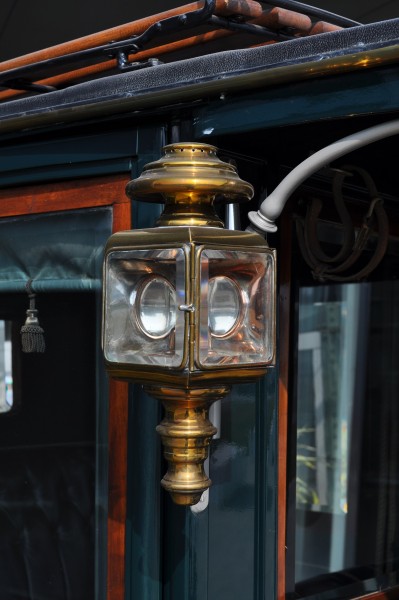
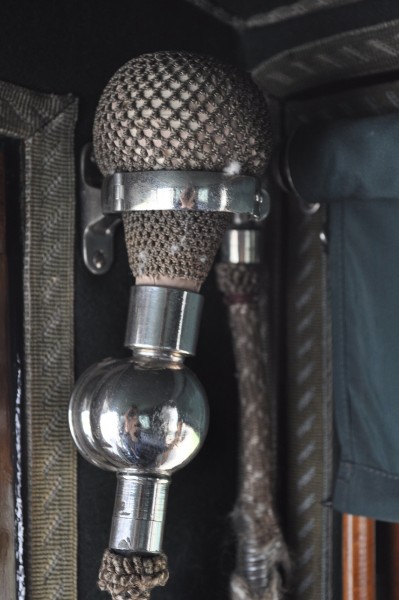
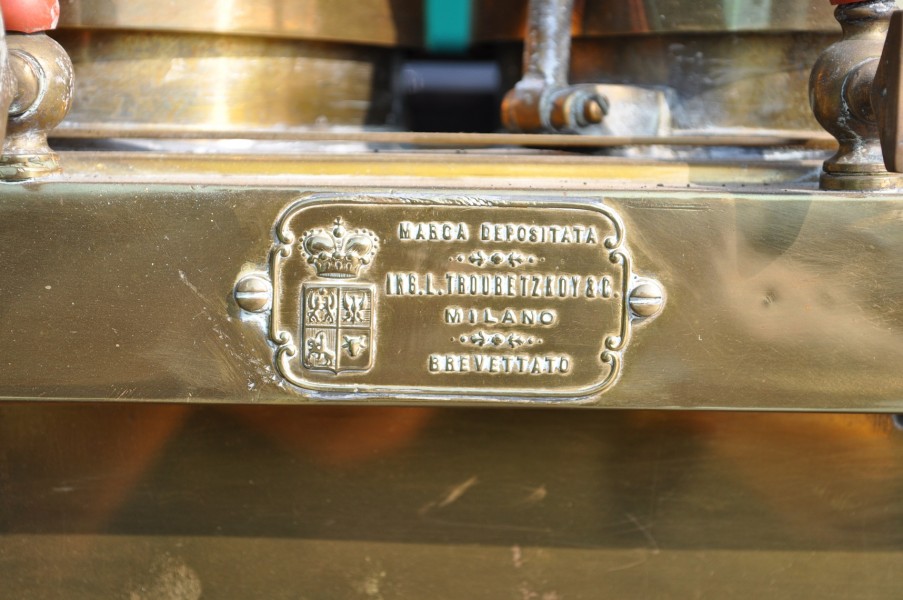
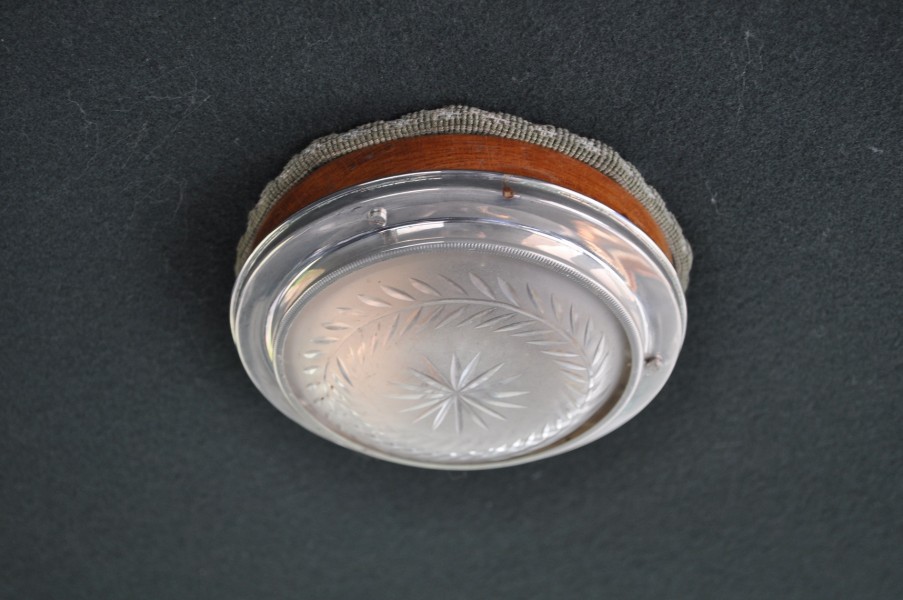
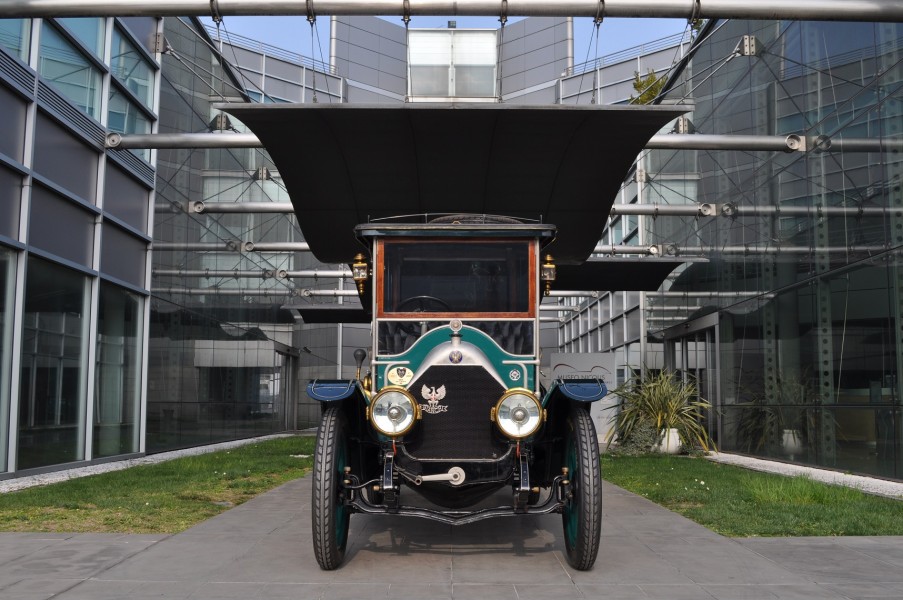
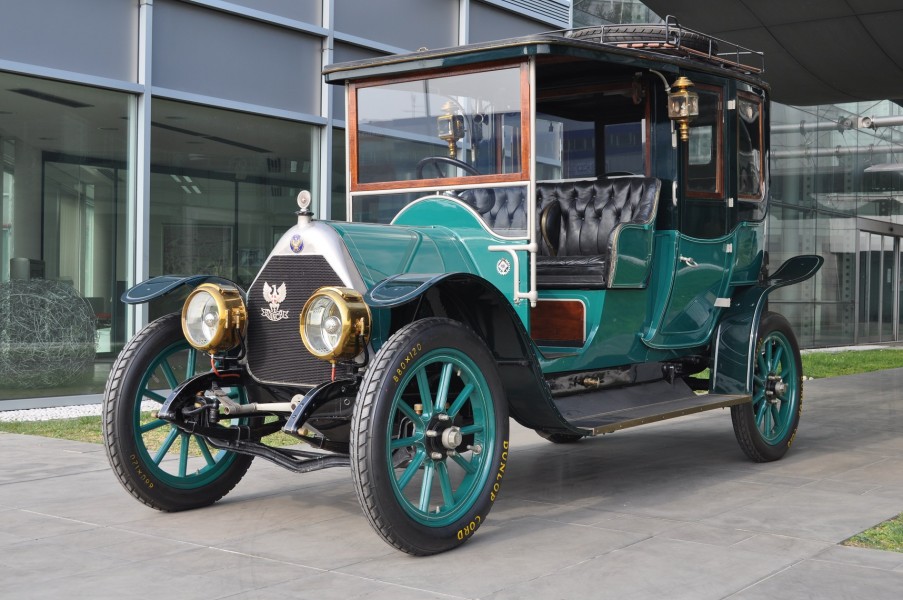
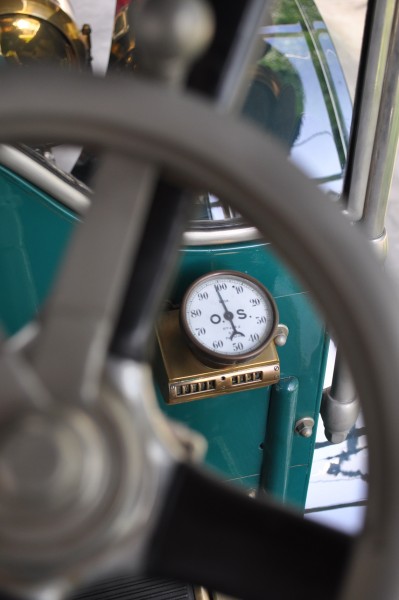
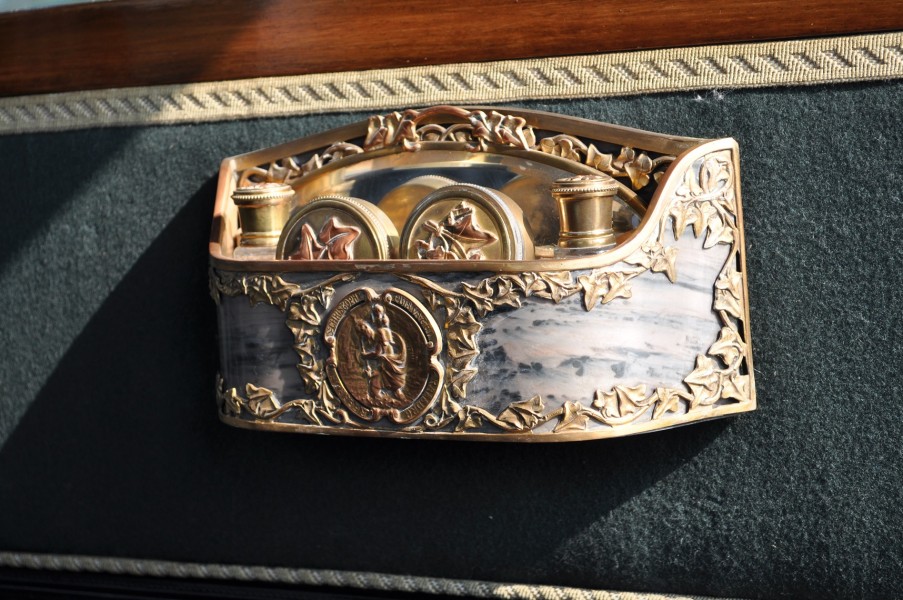
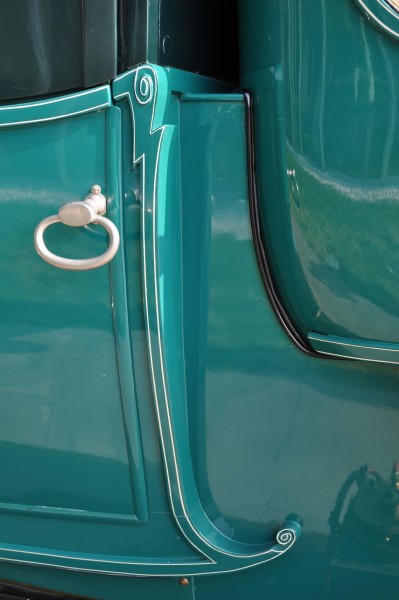
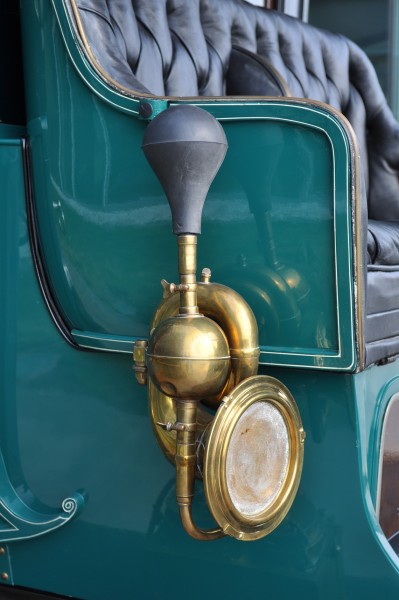
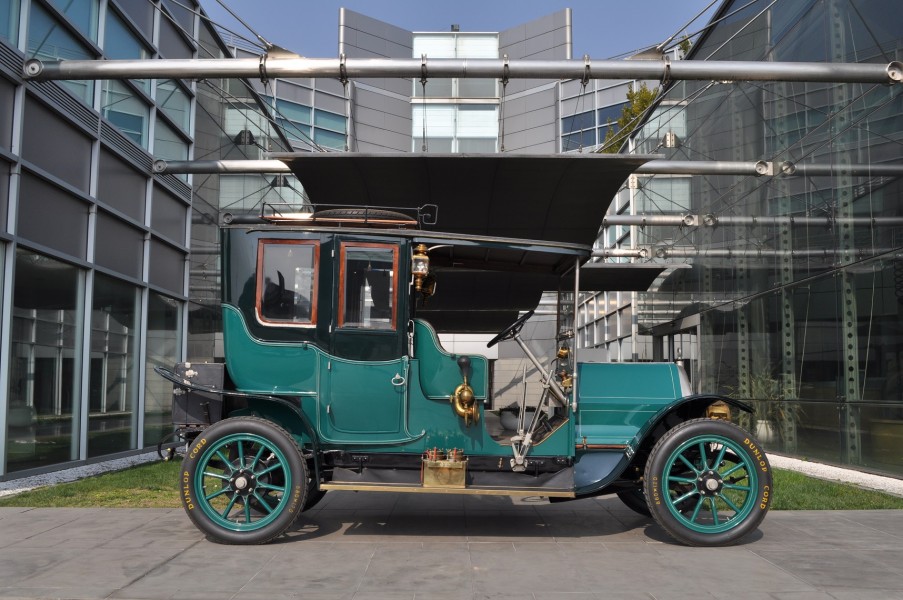
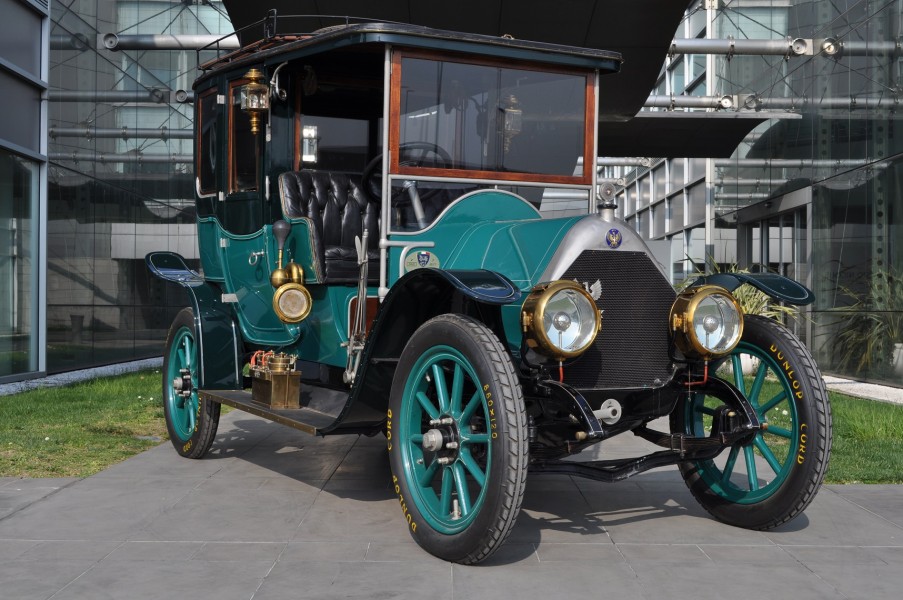
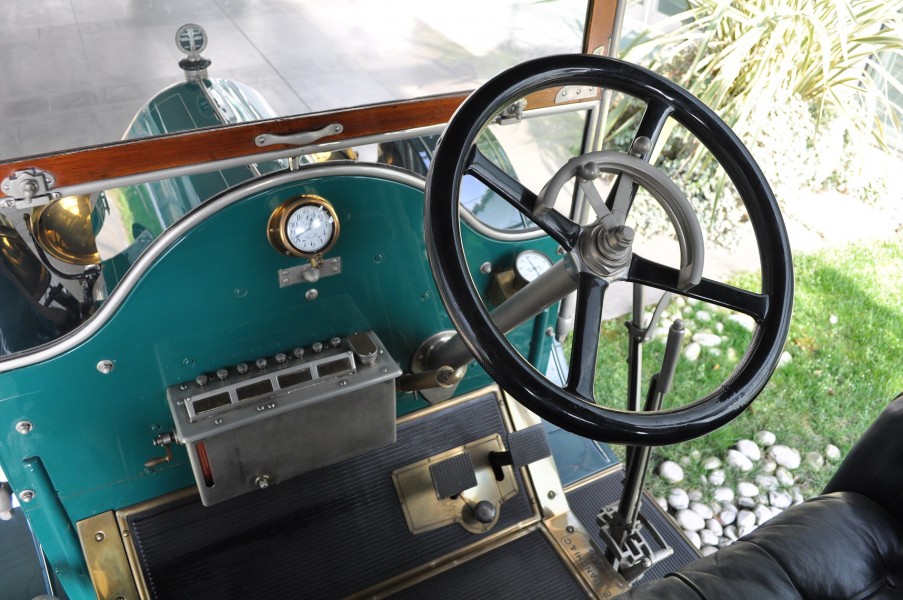
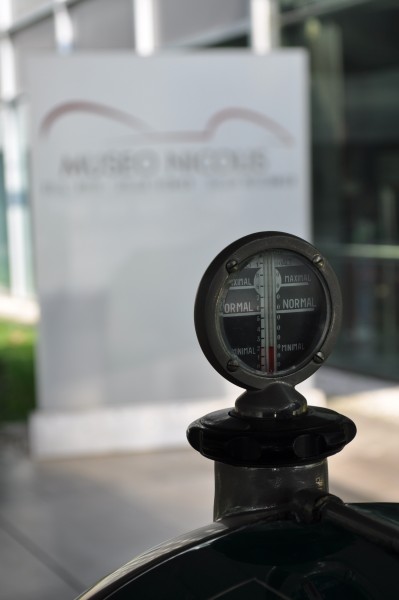
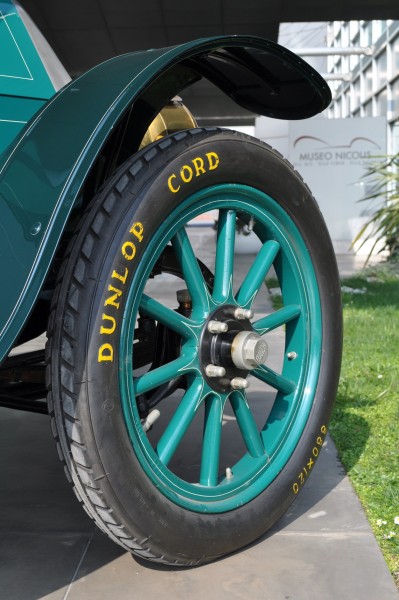
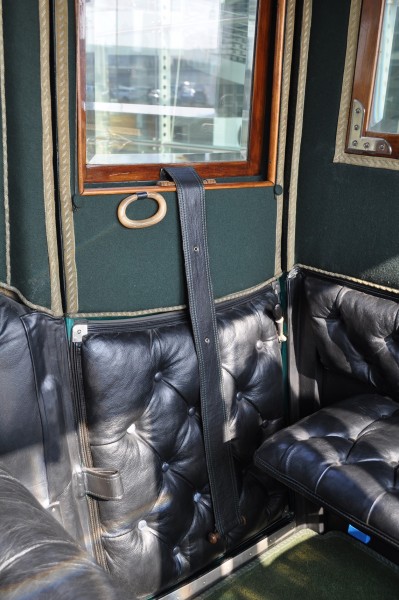
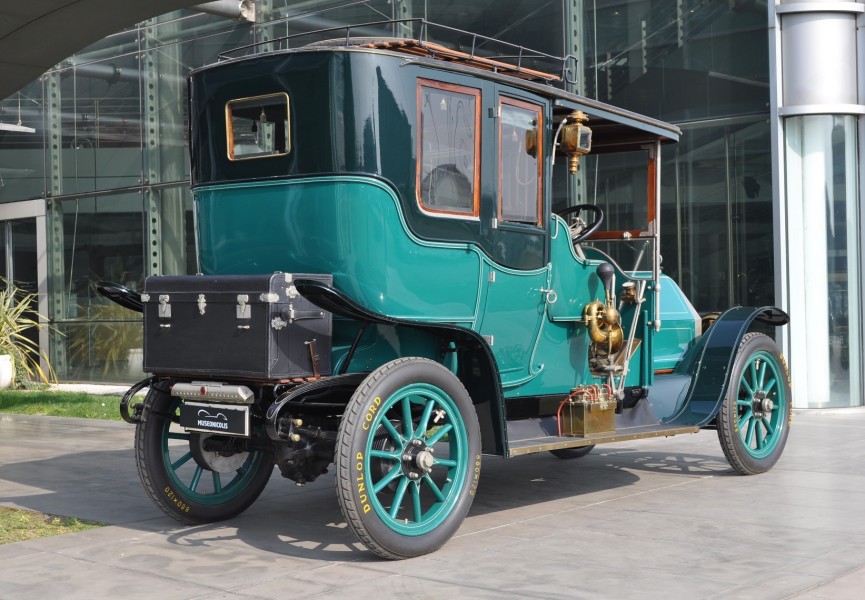
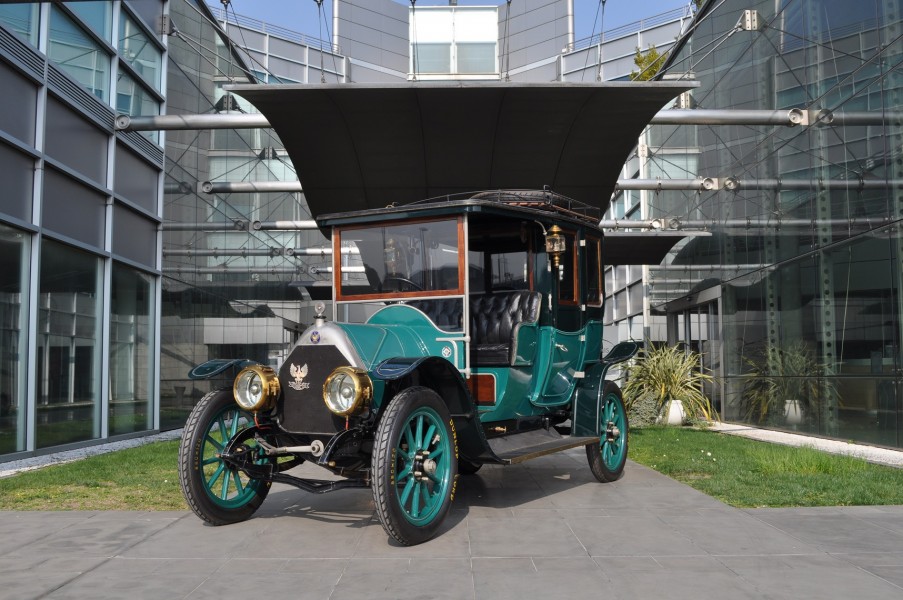
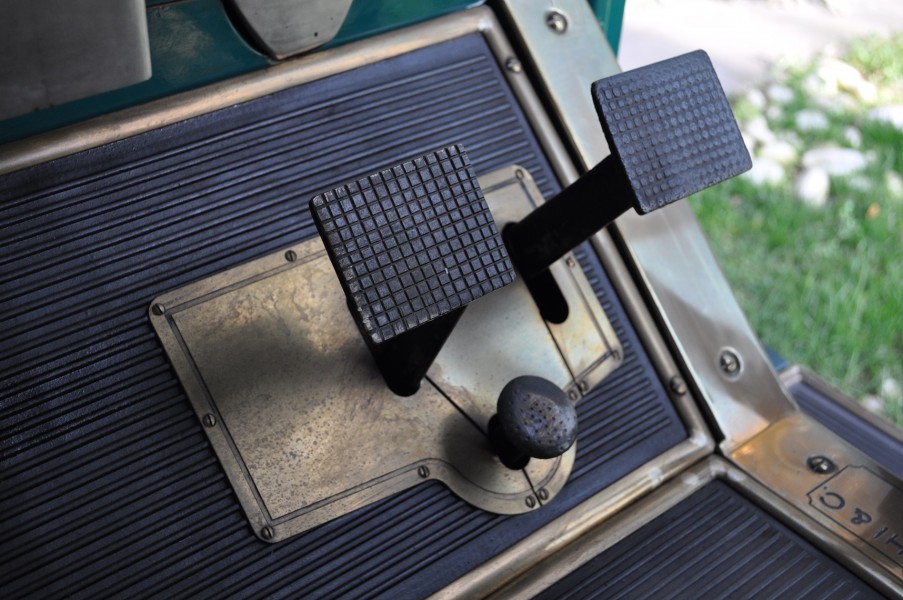
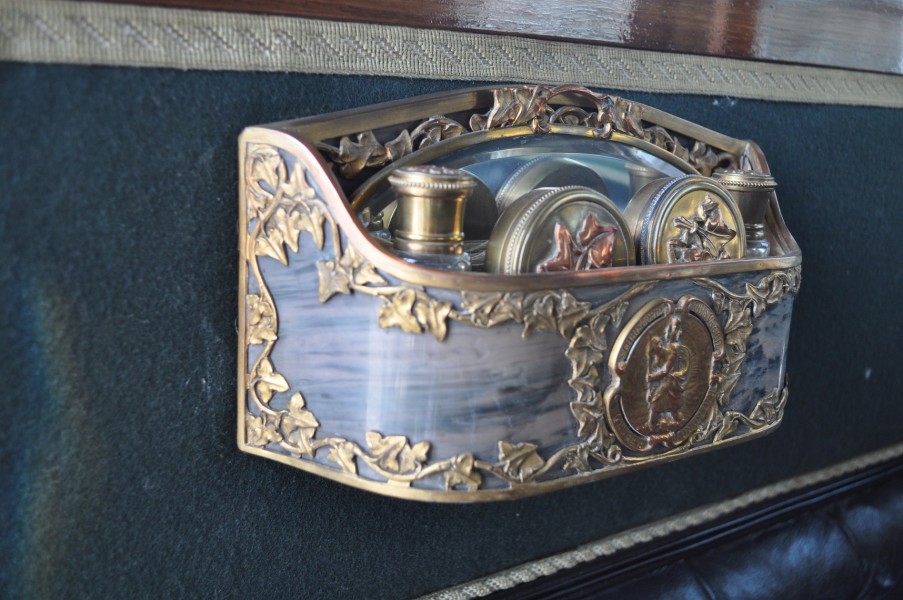
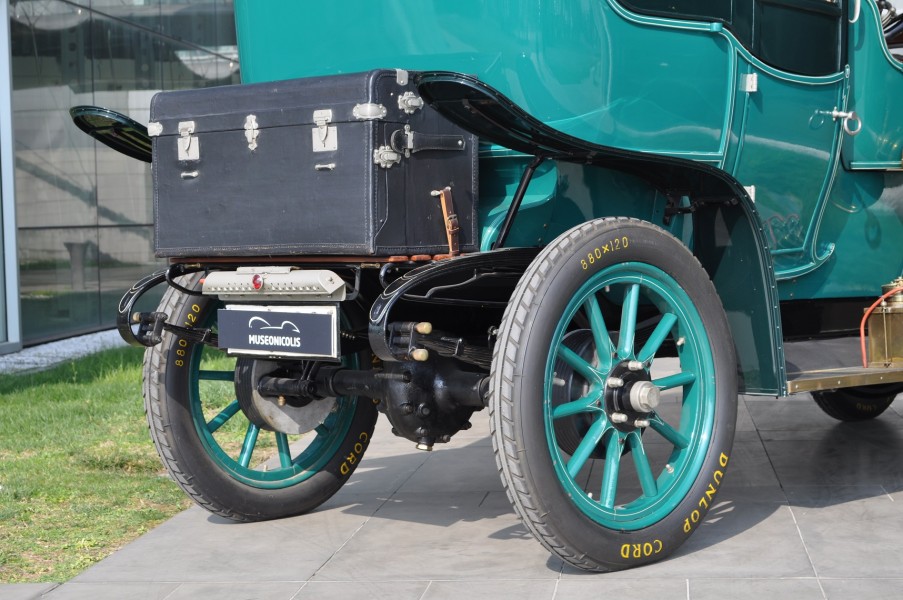
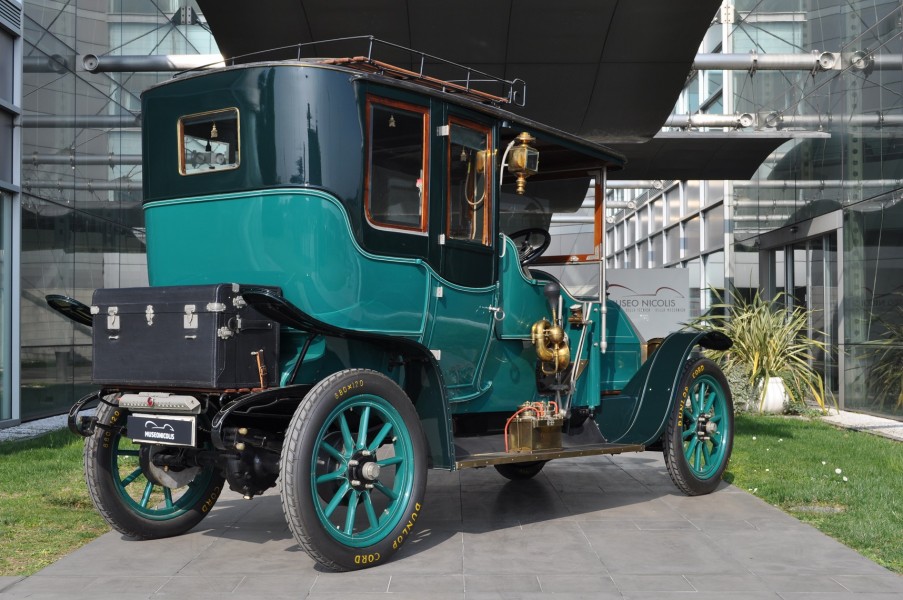
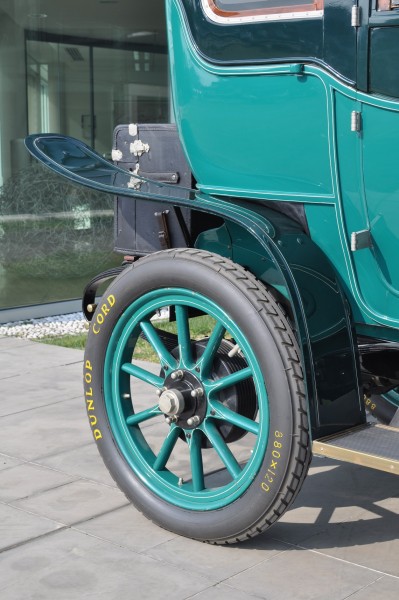
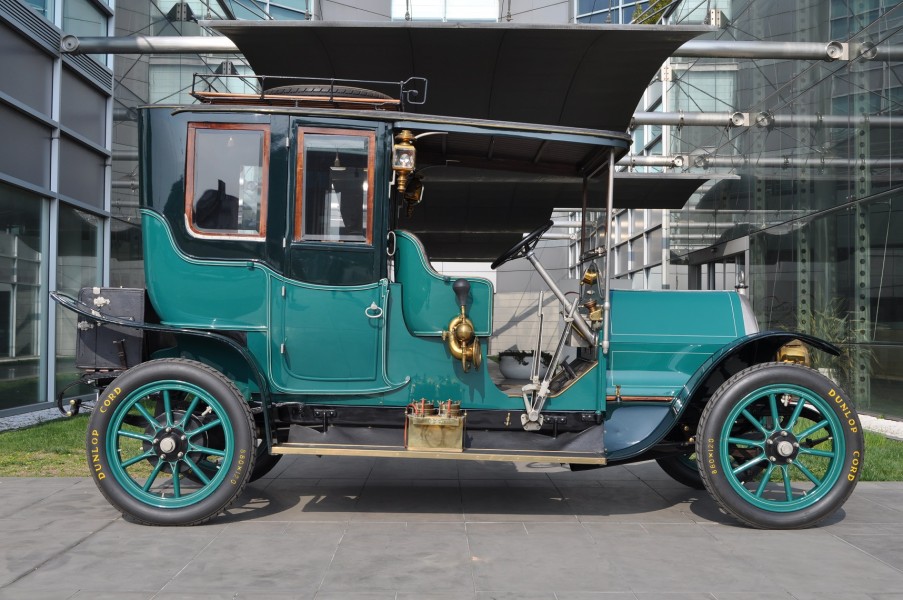
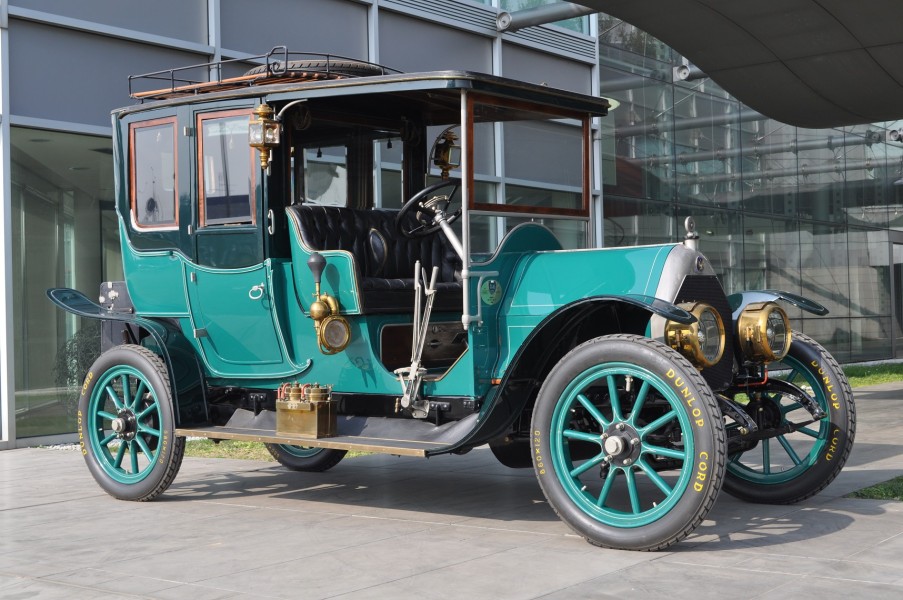
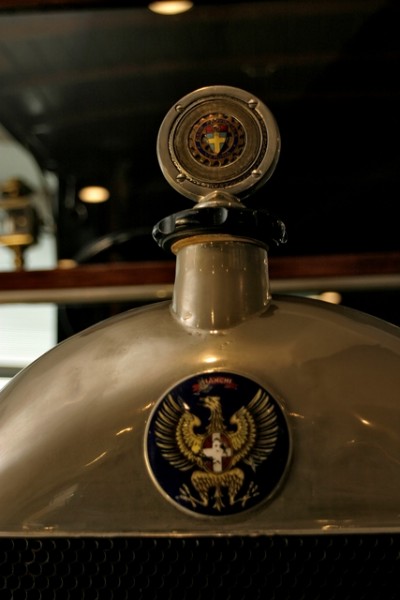
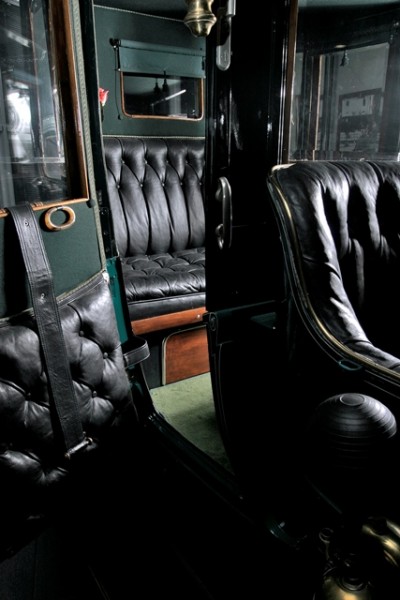
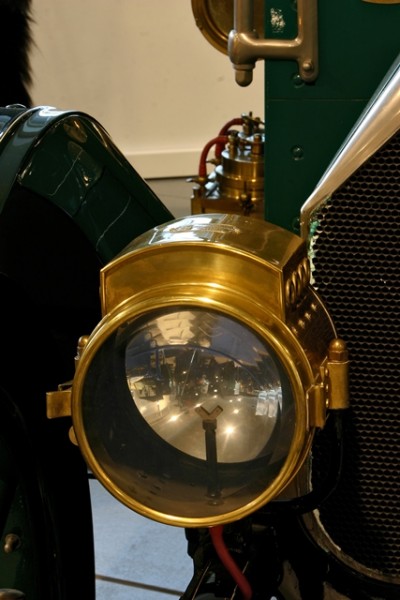
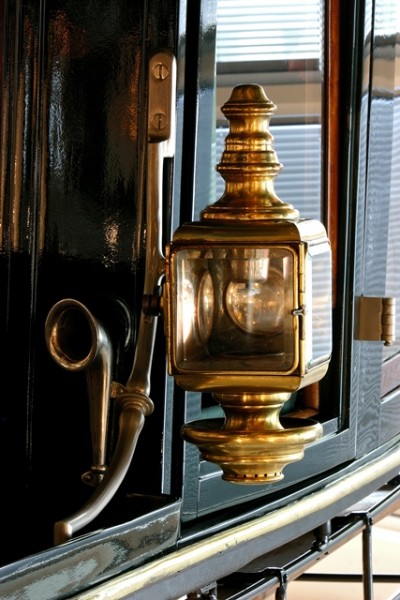
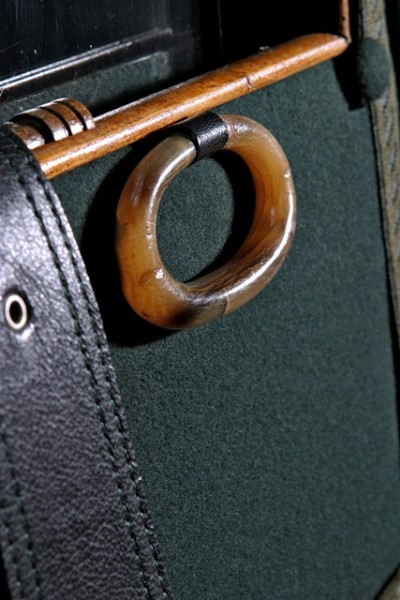
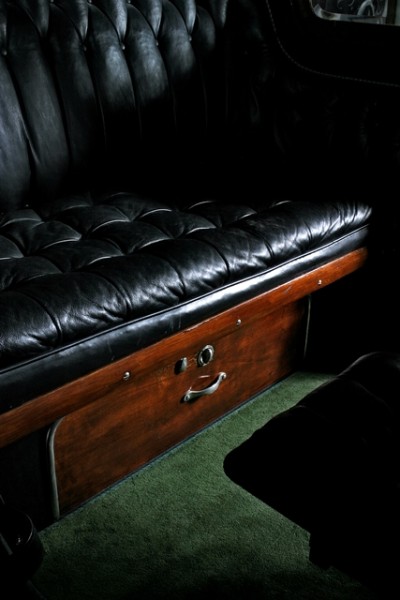
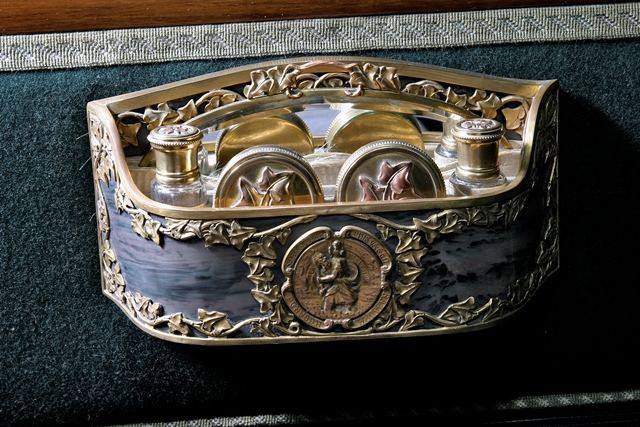
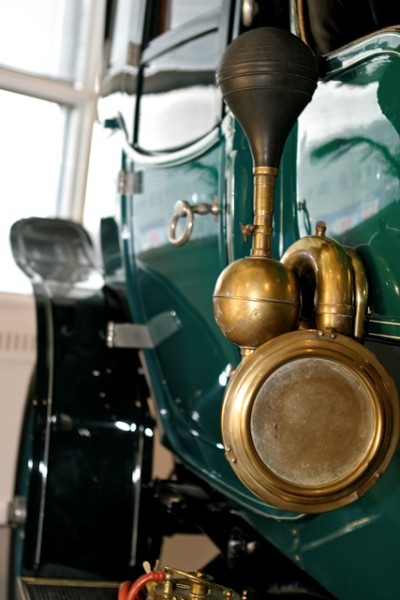
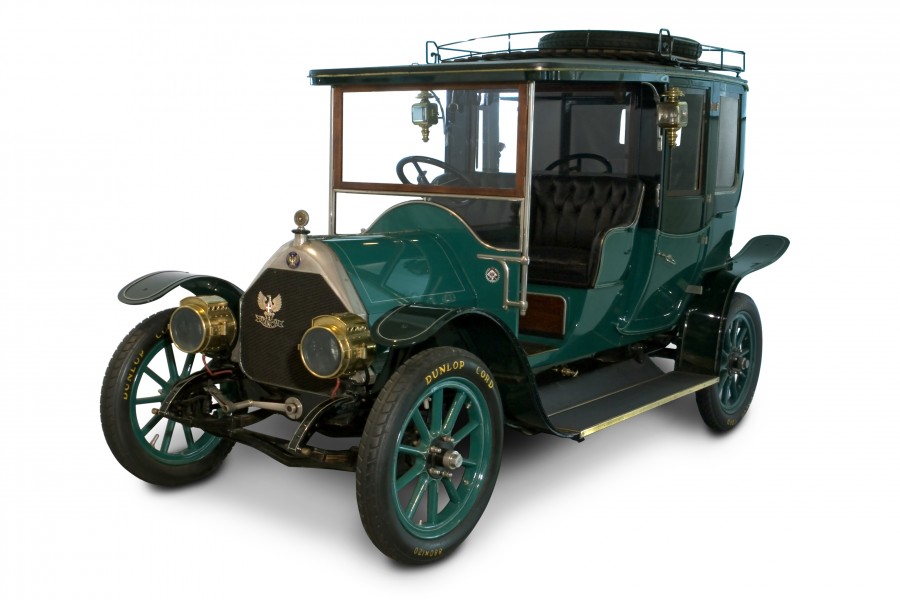
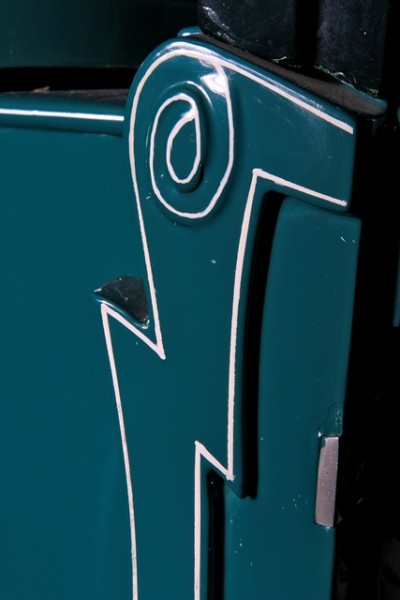
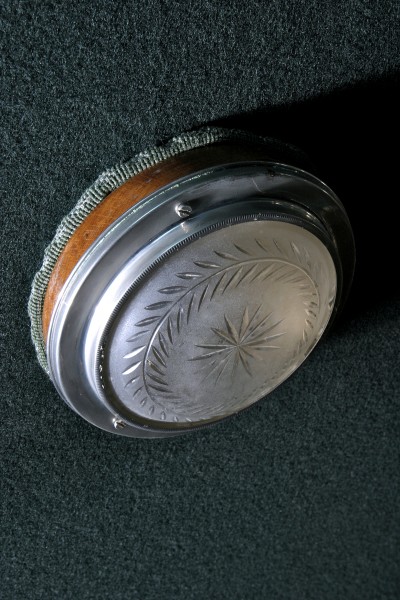
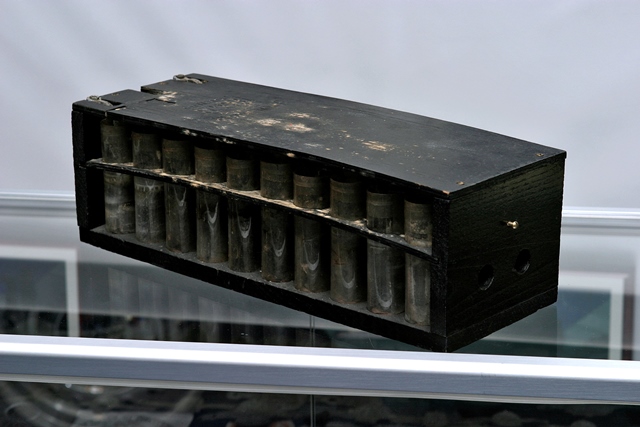
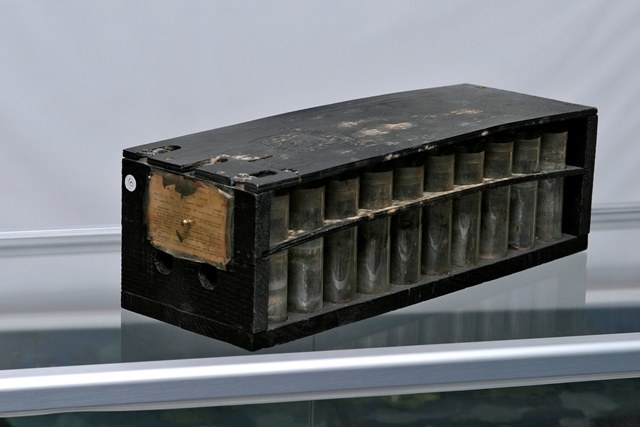
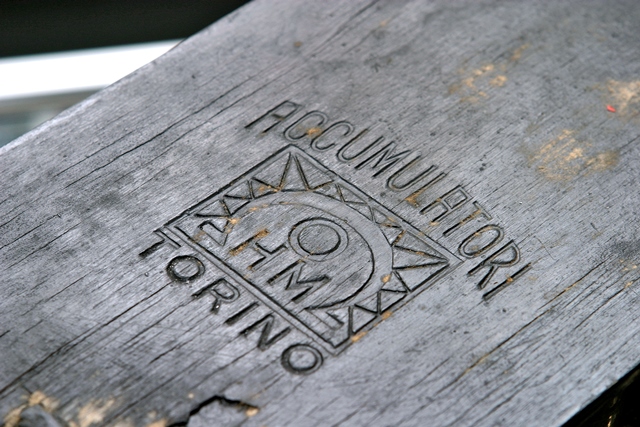
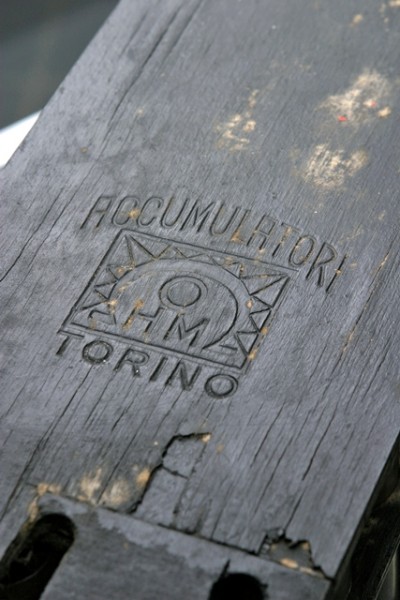
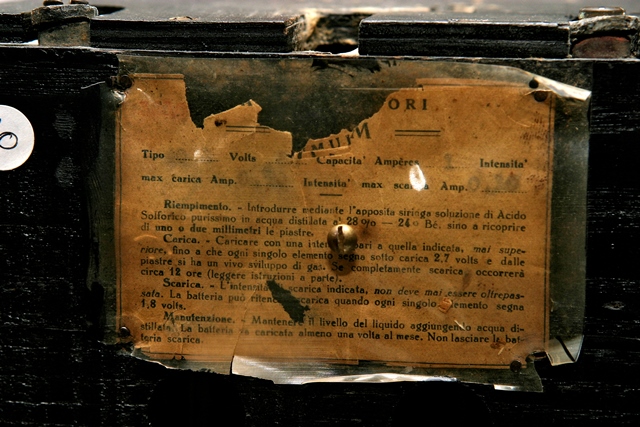
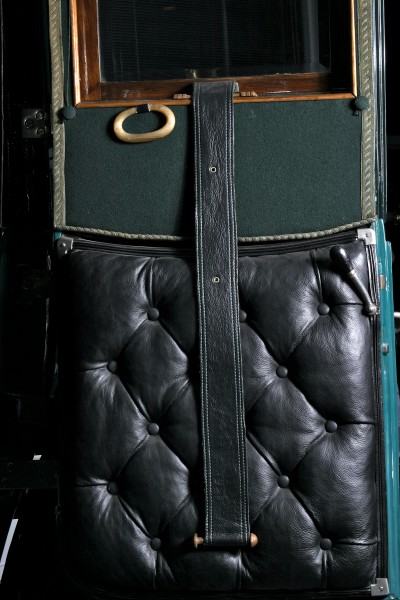
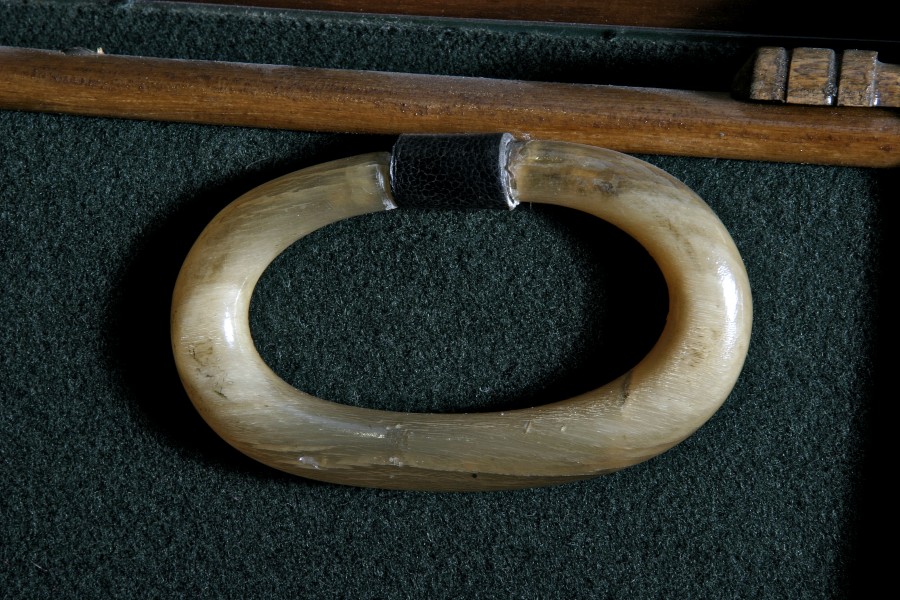
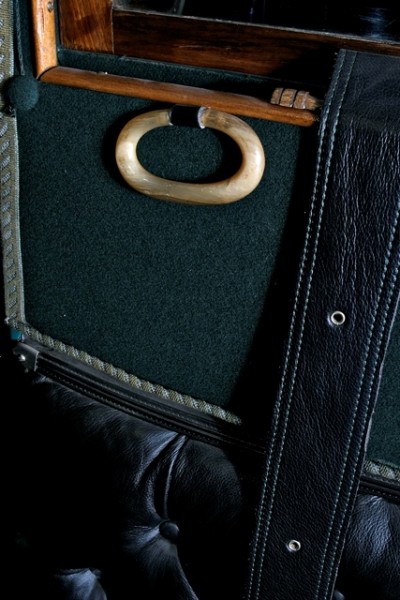
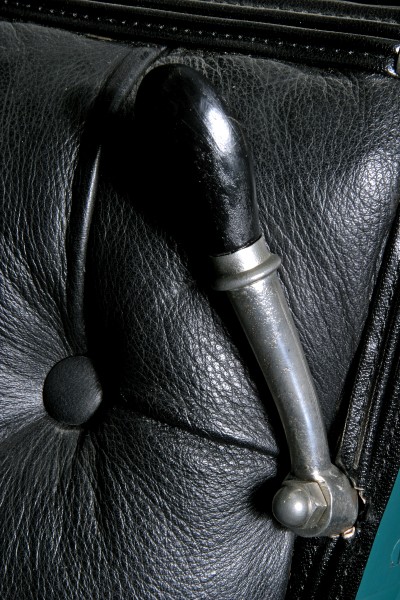
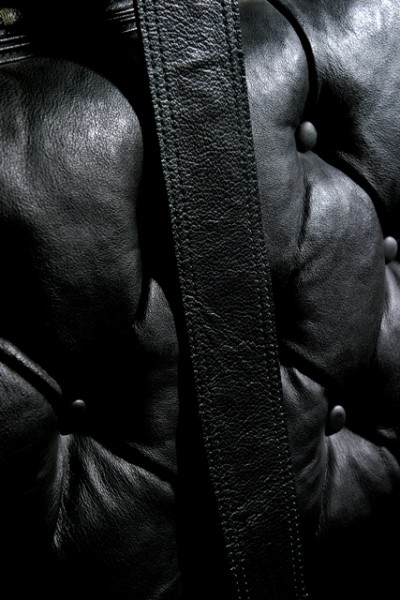
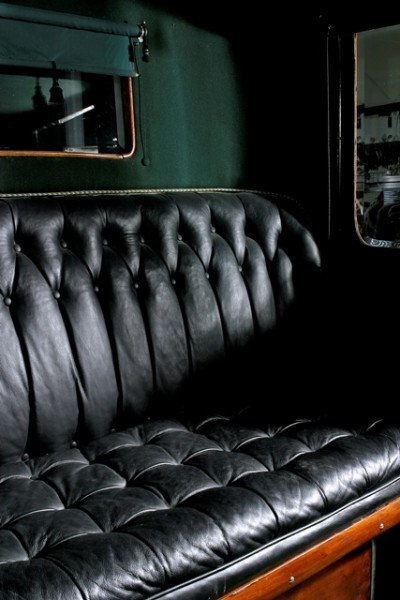
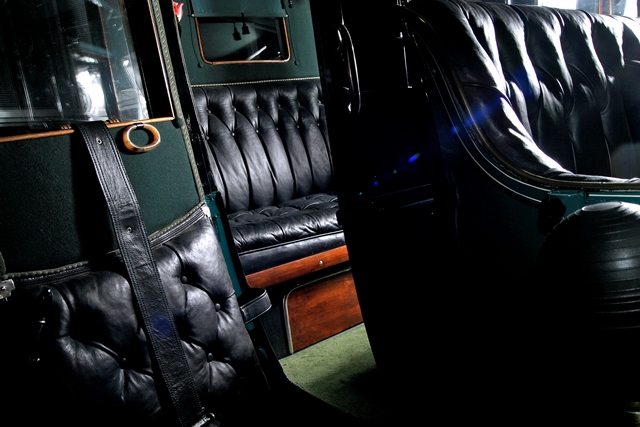
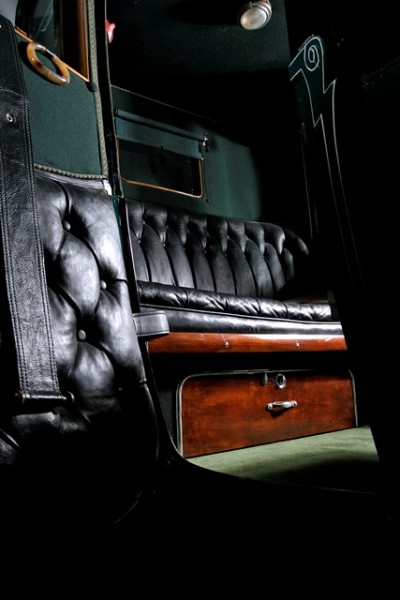
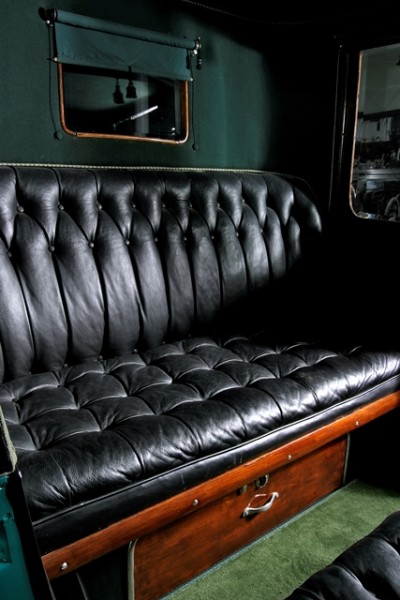
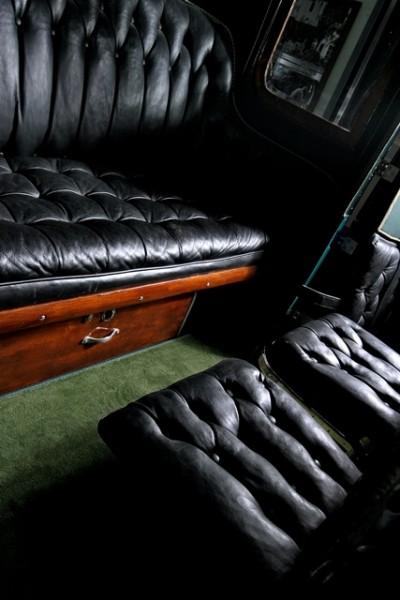
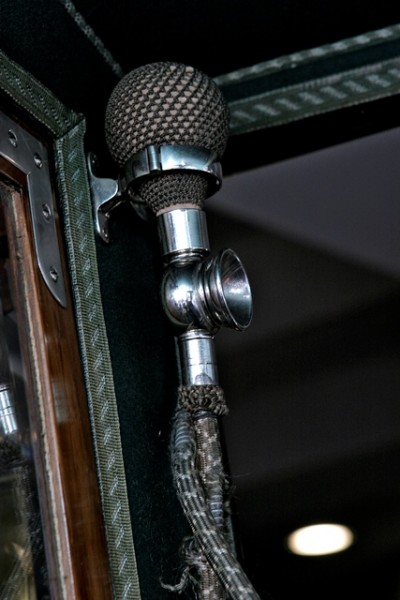
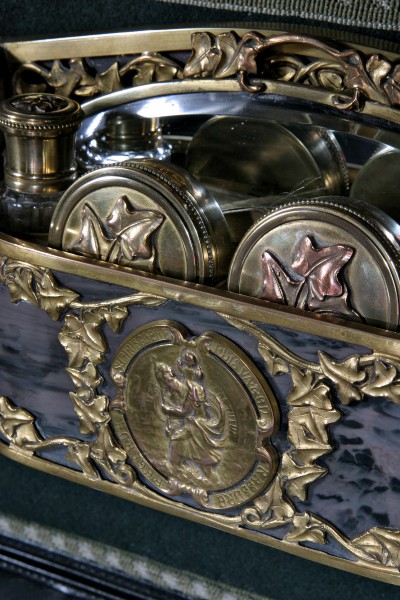
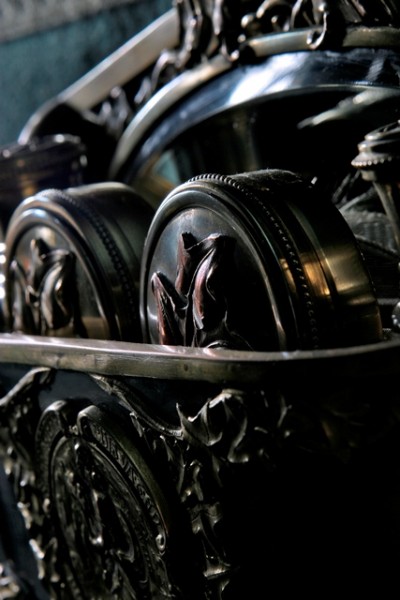
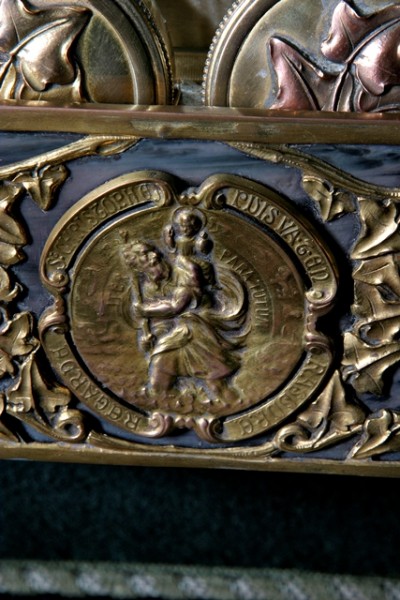
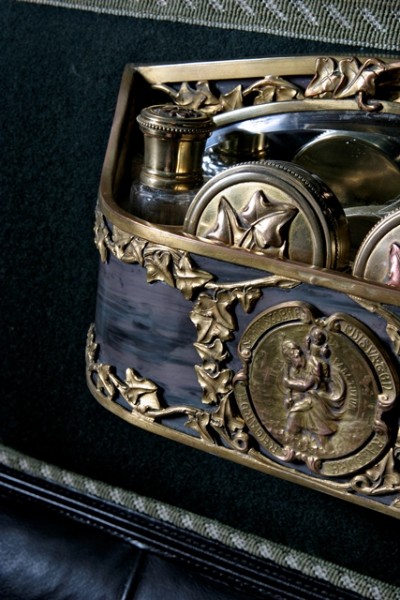
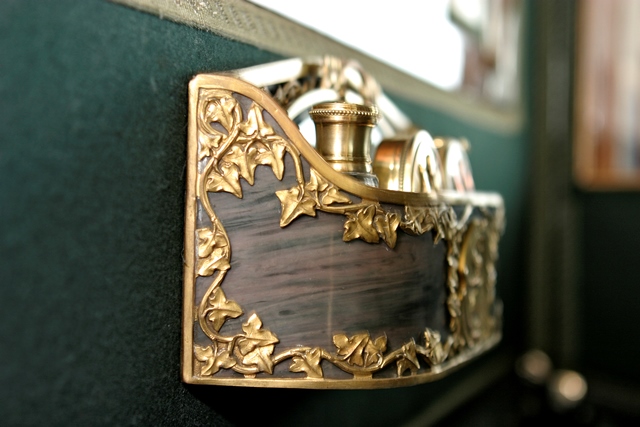
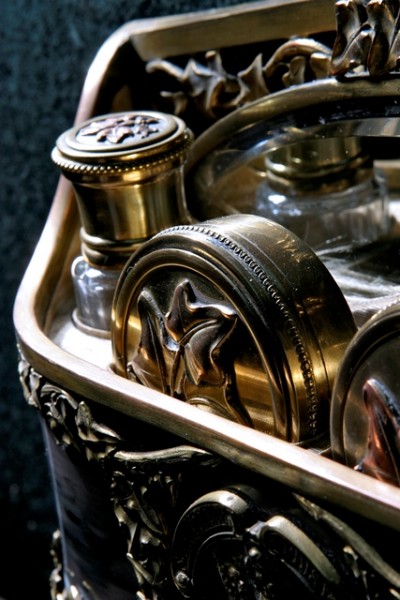
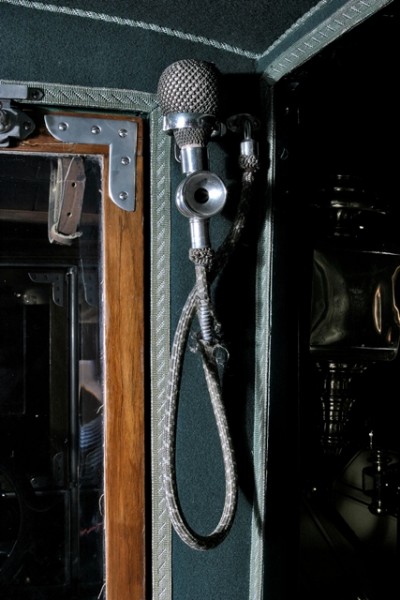
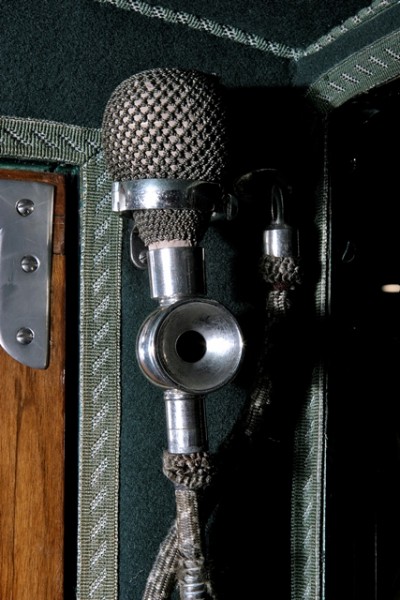
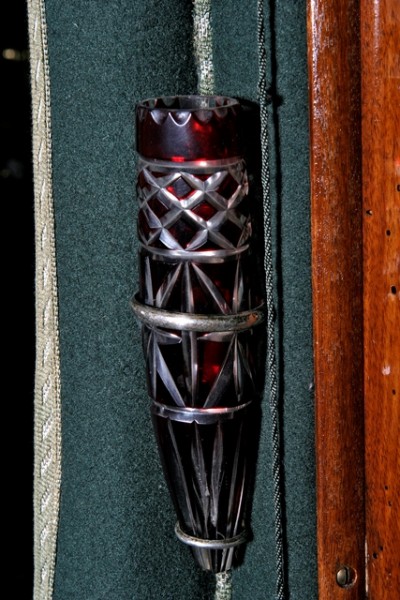
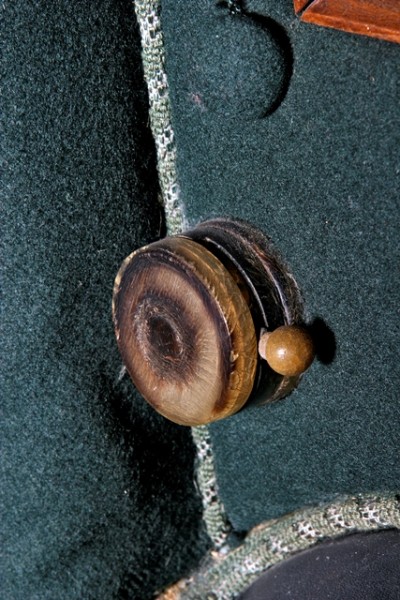
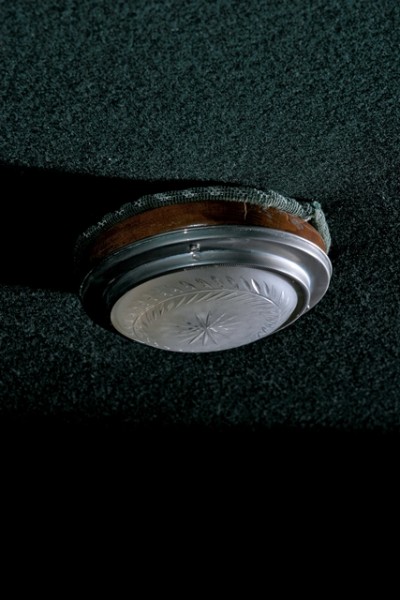
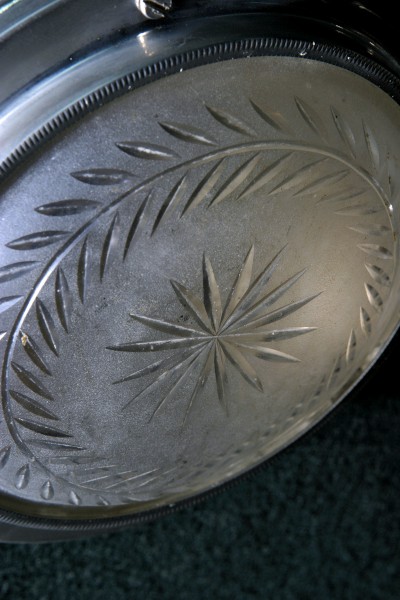
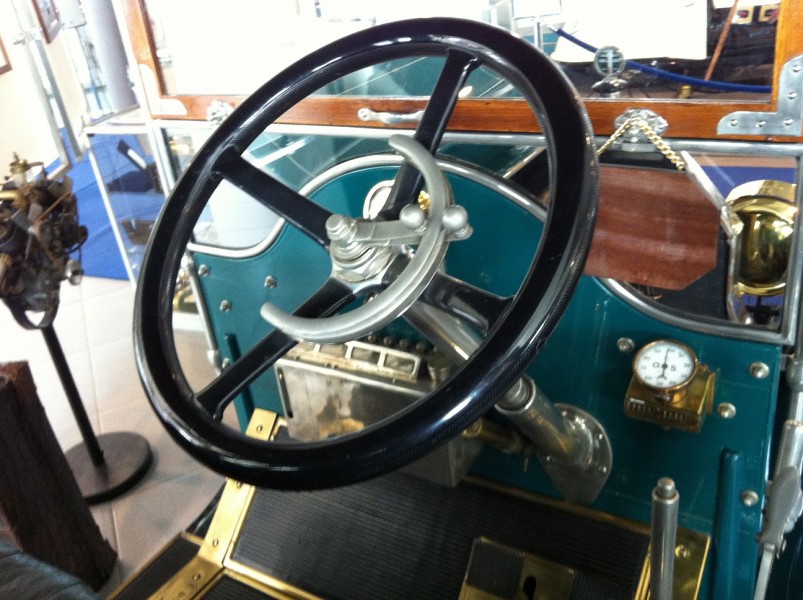
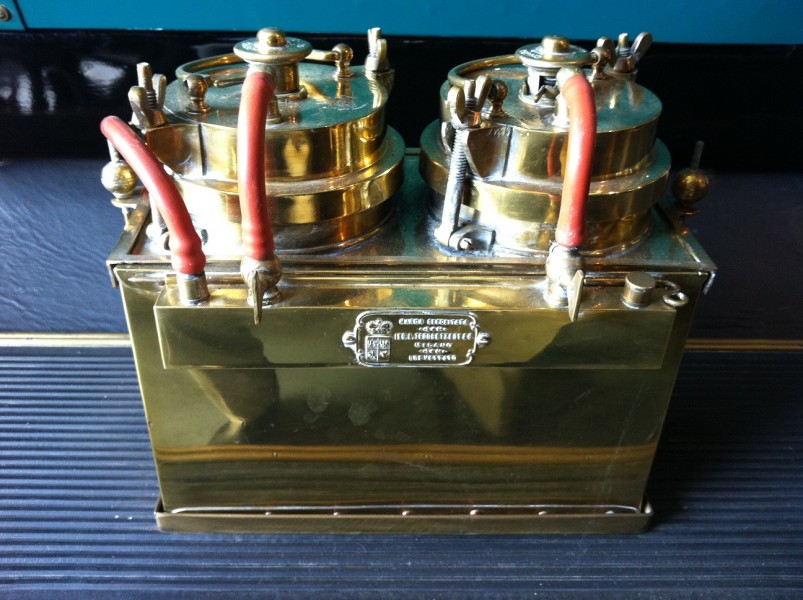
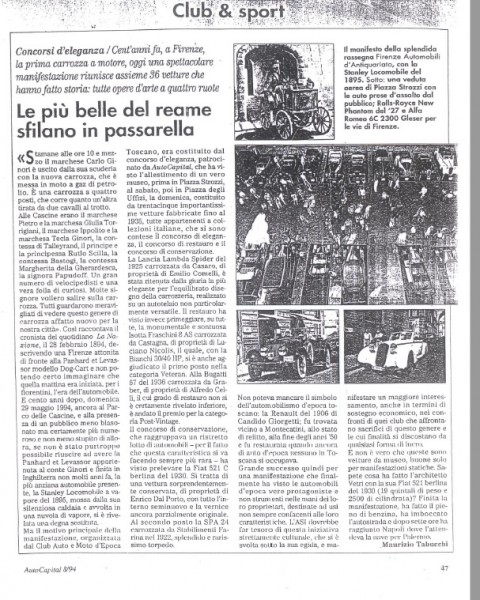
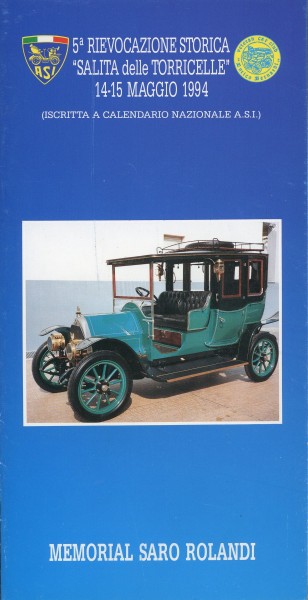
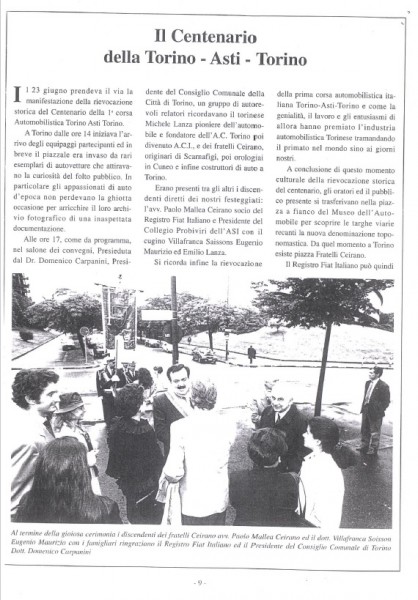
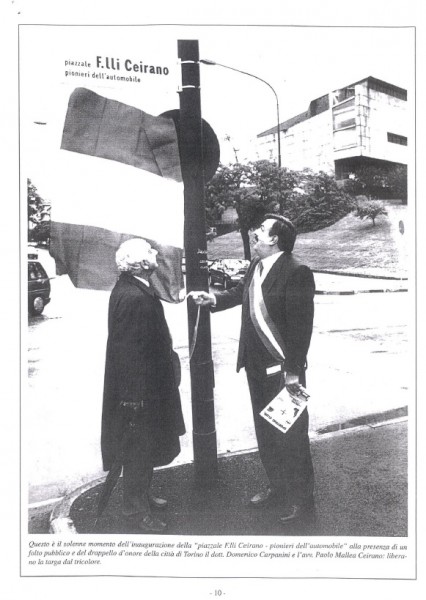
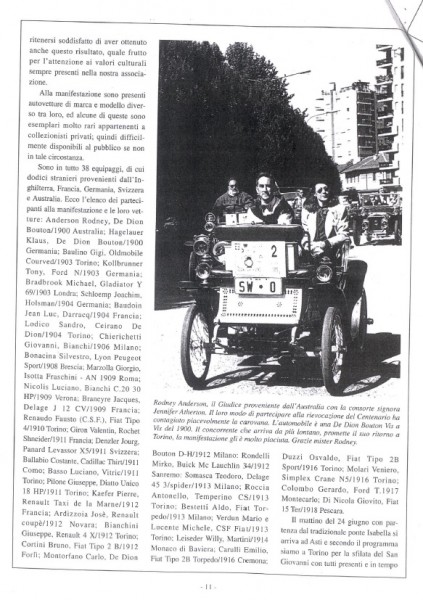
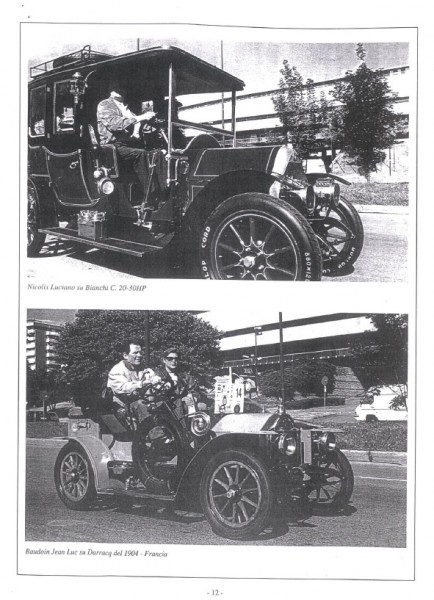
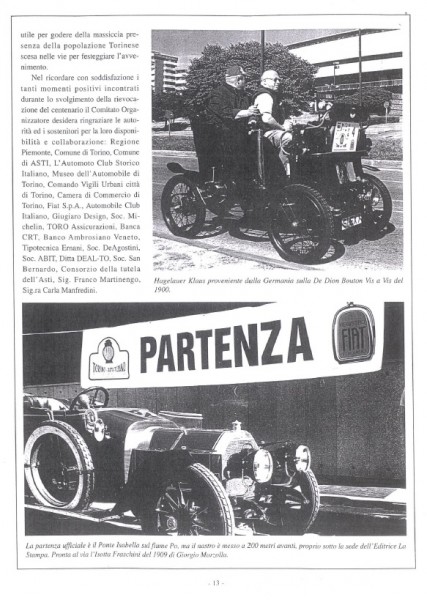
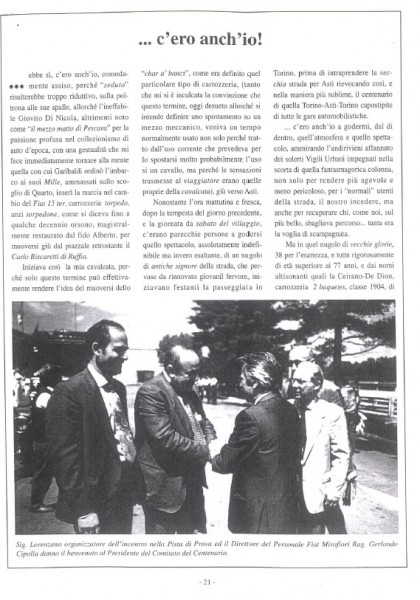
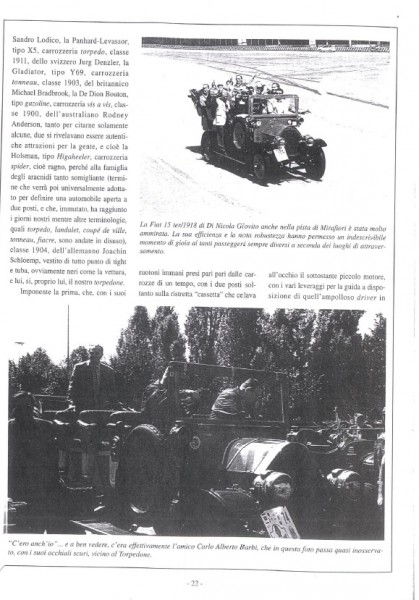
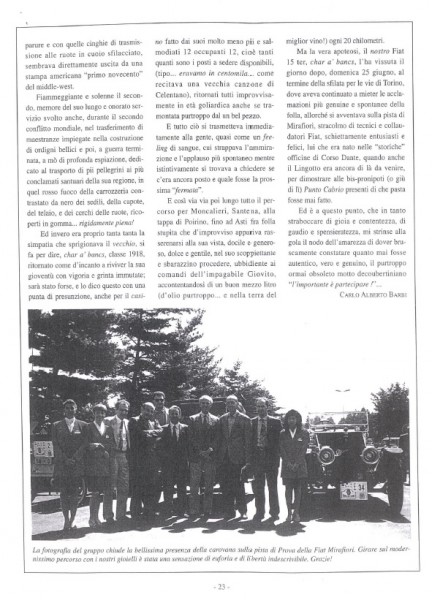
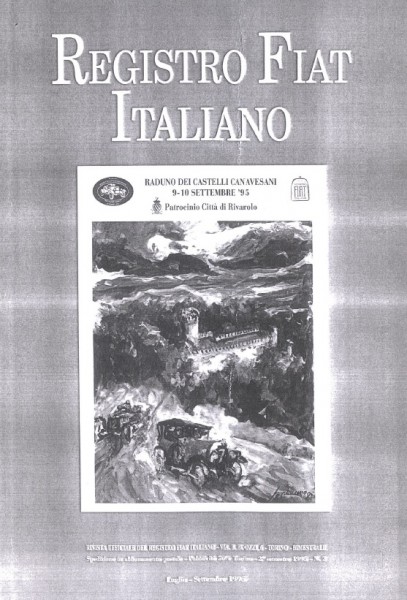







Audioguide